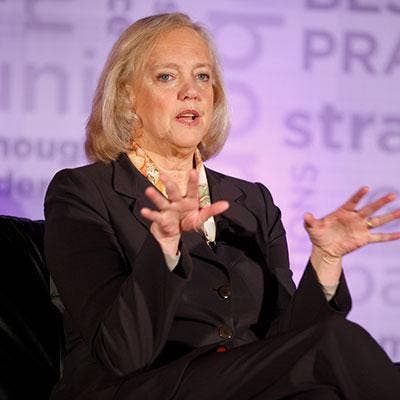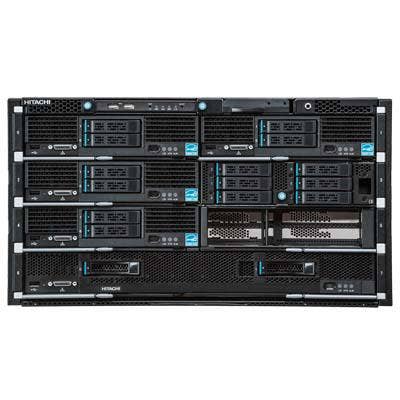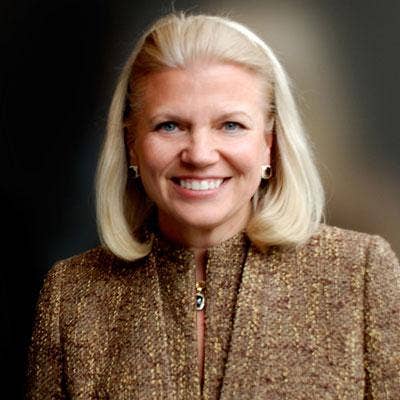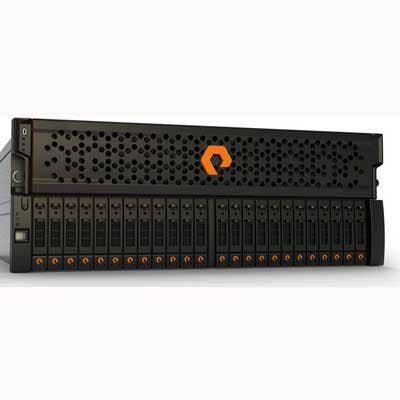IDC: All-Flash Storage Array Sales Soar In First Quarter, Enterprise Storage Sales Stumble Badly

Storage Sales: Good, Bad Or Ugly, Depending On Your Point Of View
According to a newly released report by market analyst firm IDC, the first quarter of 2016 was an unusual time for storage sales:
- It was a quarter in which only one major vendor showed actual year-over-year growth, and in which a surprise legacy vendor completely blew the doors off its competitors in terms of all-flash storage growth.
- It was a quarter in which storage vendor revenue declined, as is typical, while the amount of capacity sold also declined, which is atypical.
- The quarter also saw server-based storage sales grow while external storage systems sales fell.
CRN looks behind the numbers from IDC's Worldwide Quarterly Enterprise Storage Systems Tracker to help shed light on what is happening as the storage industry shifts from legacy hard disk-based solutions to flash storage and an emphasis on software-defined storage.

Total Storage Spending Continues To Dive
IDC reported that total enterprise storage systems sales reached $8.2 billion in the first quarter of 2016, down 7 percent from the $8.8 billion the analyst firm reported in the first quarter of 2015. Meanwhile, the total worldwide external storage systems market fell 3.6 percent year over year, to $5.4 billion, from last year's $5.6 billion.
The drops stemmed in part from a year-over-year drop in total capacity shipments of 4 percent, to 27.8 exabytes.
Storage sales tied to server-based storage rose 2 percent in the first quarter from last year's same quarter, but that was not enough to offset a 3.7 drop in total external storage sales led by a huge, nearly 40 percent dive in sales of ODM direct storage, where the focus is on hyper-scale data centers.
Hewlett Packard Enterprise was the big winner of the first quarter. It was the only major vendor to show positive growth in the quarter, letting the company take over the No. 1 position from perennial winner EMC.

All-Flash Storage Sales Skyrocket
While first-quarter all-flash storage array sales of $794.8 million represent just under 10 percent of the total enterprise storage systems market, it is the part of the market enjoying the biggest growth, IDC reported.
All-flash storage array sales grew 87.4 percent during the first quarter of 2016 compared with the same quarter of 2015.
EMC remained the top all-flash storage vendor. However, the big surprise was NetApp, which kept its No. 2 position but saw its all-flash storage sales grow by 238.2 percent, the only one of the top five vendors to see triple-digit growth.
All-flash storage sales still have a way to go to catch up with hybrid flash and disk array sales. IDC estimated that hybrid flash array sales accounted for over one-fourth of the total storage market in the first quarter at $2.2 billion.

HPE: The New No. 1
Hewlett Packard Enterprise did very, very well when it came to first quarter 2016 sales.
HPE's first-quarter total enterprise storage sales of $1.42 billion were up a significant 11 percent over the previous year's quarter. That gave HPE a 17.3 percent share of the market, helping it exceed the market share of long-term storage king EMC. HPE was also the only major vendor to see year-over-year growth in external enterprise storage systems sales, with sales growing 4.6 percent to reach $536 million.
However, when it came to its all-flash array sales, HPE was No. 4, with growth of 68.2 percent, to $98.6 million, logging only the fourth-best growth of the top five vendors.
In an emailed statement to CRN, Neeraj Gokhale, HPE's vice president of worldwide marketing for storage, noted: "Our strategy is to provide customers integrated IT systems for the new world of the all-flash and software-defined data center. The days of the pure play storage vendors are waning and this is a validation of our strategy from our loyal HPE customers and channel."
NetApp: No. 2 Overall, But Big No. 1 For All-Flash Storage Growth
NetApp kept its No. 2 spot for worldwide external storage sales, despite a huge, 15.6 percent year-over-year drop, to $646 million. However, it was the surprise growth winner in the all-flash storage market, with sales up 238.2 percent, to $181.1 million.
NetApp surprised the industry with its No. 2 flash storage showing. IDC told CRN that NetApp's second-place finish stemmed from the fact that the analyst firm changed its definition of all-flash arrays so that it now includes NetApp's All Flash FAS solutions, which were not included last year. NetApp also benefited from a move by customers to move legacy storage environments to its All Flash FAS solutions, IDC said.
Lee Caswell, vice president of NetApp's product, solutions and services marketing, told CRN via email: "We moved from #5 to #2 market share position in a year in the All Flash Array market. While we are not immune to the overall storage market dynamics, we are using flash to grow SAN share as customers consolidate on our flash portfolio across flash, disk and cloud."

EMC Sees Sales Fall As It Gets Closer To Being Acquired By Dell
EMC, the traditional top vendor, saw sales fall 11.8 percent, to $1.35 billion. That let it keep the No. 1 position in external enterprise storage sales, but dropped it below HPE in terms of total enterprise storage.
First quarter flash sales of $246 million ensured that EMC remained the No. 1 flash array vendor, but its 89 percent growth rate barely exceeded the growth for the entire market during the quarter.
Jeremy Burton, EMC's president of products and marketing, told CRN via email: "Total enterprise storage market share has always been fairly close because there are large segments of that market that EMC doesn't play in. … In external storage, EMC continues to be more than double the #2 provider, even in our seasonally weaker Q1. We've pretty much refreshed our entire product line in the First Half with new VMAX All Flash, Unity, Isilon, DSSD, Scale IO, ECS. So, we're entering a very strong product cycle going into the back half of the year."

Dell Prepping To Be No. 1
Dell, which this summer could close its planned acquisition of EMC, is the third-largest seller of enterprise storage systems, with sales in the first quarter of $846 million, down 5.8 percent from last year's first quarter. The company is the sixth-largest seller of external enterprise storage systems, at $376 million, down 4.8 percent from last year's quarter.
Dell did not break into the top five all-flash storage vendors.
However, once the EMC acquisition has closed, Dell will be far and away the largest seller of storage, including all-flash storage. That is, assuming that the sales of Dell and EMC solutions do not slow down any more than they did in the first quarter.

Hitachi: Not Hemorrhaging As Much As Most
Hitachi and Hitachi Data Systems in the first quarter saw minor drops in storage revenue, according to IDC. Hitachi did face a minor scare this month when ITpro, an online publication of Japan-based Nikkei Business Publications, published a story dated June 1 with the headline "Hitachi business strategy briefing, new investments in high-end storage to freeze." HDS executives denied the report.
Hitachi and HDS saw first quarter enterprise storage systems sales fall 1.6 percent from last year's quarter, to $514 million, while its external storage systems sales fell 2 percent, to $497 million, IDC reported.
Hitachi did not break into the top five all-flash storage vendors.

IBM Continues Its Decline
IBM was the sixth-largest seller of enterprise storage systems, with first-quarter 2016 sales of $476 million, down 11.4 percent from the same period of 2015. Sales of external enterprise storage systems did better, slipping only 3.8 percent from last year's quarter, to $429 million.
However, IBM's all-flash storage array sales did well in the first quarter of 2016, with sales rising 47 percent over last year's same quarter, to $67 million.

Pure Storage Maintains Its No. 3 All-Flash Position
While Pure Storage still has a long way to go before it can lay claim to being one of the top five storage vendors in general, the all-flash storage specialist vendor is holding on to its No. 3 spot in this part of the storage market, with first-quarter sales of $120 million. That was up 96.7 percent over last year's same quarter sales.

Hyper-Scale Data Centers Stumble, 'Others' Do Well
Sales of storage solutions to hyper-scale data centers fell sharply in the first quarter, IDC said. However, IDC wrote, "the nature of the hyperscale business leads it to fluctuate heavily."
Hyper-scale data center enterprise storage systems purchases fell 39.9 percent in the first quarter from last year's same quarter, to $681 million.
However, sales of enterprise storage systems by the "Other" vendors actually did well, with their revenue rising from last year's quarter by 5.3 percent, to almost $2.3 billion.